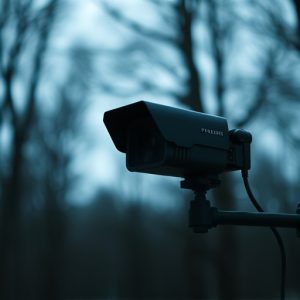Optimizing Home Safety: Best Practices for Covert Camera Network Installation
When utilizing hidden cameras for home monitoring, prioritize legal and ethical considerations, resp…….
When utilizing hidden cameras for home monitoring, prioritize legal and ethical considerations, respecting privacy rights while enhancing security. Strategically place high-definition, wireless cameras with NVRs in visible areas like entryways and common rooms. Blend covert cameras into decor, encrypt transmissions, and secure data access to protect against unauthorized viewing and cyber threats.
“Uncover the power of hidden cameras for home monitoring with our comprehensive guide on installation best practices. As technology advances, ensuring privacy and security becomes paramount alongside effective surveillance. This article navigates the intricate balance between legal and ethical considerations, offering insights into strategic camera placement for optimal protection.
From selecting robust equipment to implementing privacy measures, we equip you with knowledge to establish a covert network that safeguards your peace of mind.”
- Understanding Legal and Ethical Considerations for Hidden Camera Installation
- Selecting the Right Location and Equipment for Optimal Home Monitoring
- Ensuring Privacy and Security Measures for Your Covert Camera Network
Understanding Legal and Ethical Considerations for Hidden Camera Installation
When considering hidden camera installation, it’s crucial to navigate a delicate balance between effective home monitoring and strict legal and ethical boundaries. The use of hidden cameras, also known as surveillance cameras, is regulated by laws that vary significantly from one jurisdiction to another. It’s essential to understand these regulations to ensure compliance and avoid potential consequences. For instance, many regions have strict rules regarding consent, privacy rights, and the purpose for which such cameras can be deployed.
When used for home monitoring, hidden cameras should primarily serve as a deterrent to crime and not invade personal privacy needlessly. They must be installed in areas that offer clear visibility without capturing private spaces or intimate activities. Property owners should also inform visitors and employees about the presence of surveillance equipment, respecting the right to privacy while ensuring transparency. This approach respects legal boundaries and leverages hidden cameras for their intended purpose—protecting homes and assets through intelligent monitoring.
Selecting the Right Location and Equipment for Optimal Home Monitoring
When setting up a covert camera network for home monitoring, choosing the ideal locations and equipment is paramount. The goal with hidden cameras is to maintain discretion while capturing clear, useful footage. Strategically placed cameras in high-traffic areas like entryways, living rooms, or kitchens can provide valuable surveillance without being obtrusive. Consider both visible and concealed mounting options, ensuring they blend seamlessly into the environment.
Opt for high-definition (HD) cameras with infrared capabilities for night vision to maintain quality footage regardless of lighting conditions. Wireless models offer flexibility in placement, while hardwired cameras typically deliver more stable connections. Additionally, invest in a reliable network video recorder (NVR) capable of processing and storing footage efficiently. This equipment acts as the brain of your covert camera network, allowing remote access for monitoring and recording.
Ensuring Privacy and Security Measures for Your Covert Camera Network
When setting up a covert camera network for home monitoring, prioritizing privacy and security is paramount. It’s crucial to install cameras in discreet locations, ensuring they’re not easily visible to deter potential intruders. Utilize hidden cameras designed to blend into their surroundings—inside faux fire alarms, electrical outlets, or decorative objects can be effective tactics. Additionally, encrypt video transmissions and store data securely to protect against unauthorized access.
Implement robust access controls and ensure only authorized personnel have the login credentials for viewing footage. Regularly update software and firmware to patch any security vulnerabilities. Moreover, consider using secure network protocols like HTTPS for communication between cameras and servers, adding an extra layer of protection against cyberattacks.
When implementing a covert camera network for home monitoring, it’s crucial to balance effective surveillance with respect for privacy and legal boundaries. By understanding the ethical landscape, choosing strategic installation locations, and fortifying security measures, homeowners can leverage hidden cameras as a powerful tool for peace of mind without infringing on personal freedoms. Adhering to these best practices ensures a secure and legal home monitoring system utilizing hidden cameras for optimal protection.


